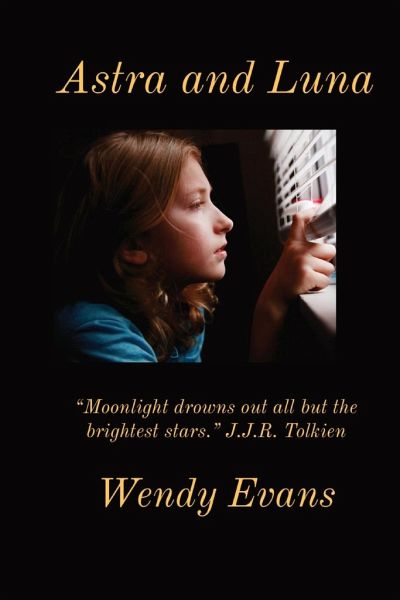
Astra and Luna
Versandkostenfrei!
Versandfertig in 1-2 Wochen
17,99 €
inkl. MwSt.

PAYBACK Punkte
9 °P sammeln!
Much of the unknown remains within our brains and in the universe. We can map the earth, but the vastness of the universe is impossible to plot with accuracy. It is ever-changing. Our brains hold the same enigmatic maps; for centuries, its operated beyond our understanding. We're gaining more insight, but with insight comes more questions. What makes someone a savant and someone else marginal? What is the Island of Genius? While I have researched this story's historical time, it is a work of fiction. I'm not an expert, or this will make a boring medical journal. Growing up in the 1960s, I live...
Much of the unknown remains within our brains and in the universe. We can map the earth, but the vastness of the universe is impossible to plot with accuracy. It is ever-changing. Our brains hold the same enigmatic maps; for centuries, its operated beyond our understanding. We're gaining more insight, but with insight comes more questions. What makes someone a savant and someone else marginal? What is the Island of Genius? While I have researched this story's historical time, it is a work of fiction. I'm not an expert, or this will make a boring medical journal. Growing up in the 1960s, I lived next to two brothers; both would now be classified on the autism spectrum. There was little service available to these boys back then. It broke my heart to think these boys would be institutionalized. Looking back at my six-year-old self, I developed a sense of compassion. Developments in mental health have advanced. I have a nephew who is on the spectrum. The character of Astrid is loosely based on a young autistic acquaintance. This story takes place in Great Britain during the 1960s when social norms were being overthrown, and data on mental illness was compiled. It could have happened anywhere during those years of self-discovery, peace, and love. In the 1960s and 70s, I was a teenager and moving into young adulthood in America. Changes were the only certainty in life. Like Lenora McConnell and so many other women, we were questioning everything; our roles as women, exploring careers different from a teacher, nurse, or secretary, and our bodies we claimed for our own. As Bob Dylan sang, the times were a-changing".













